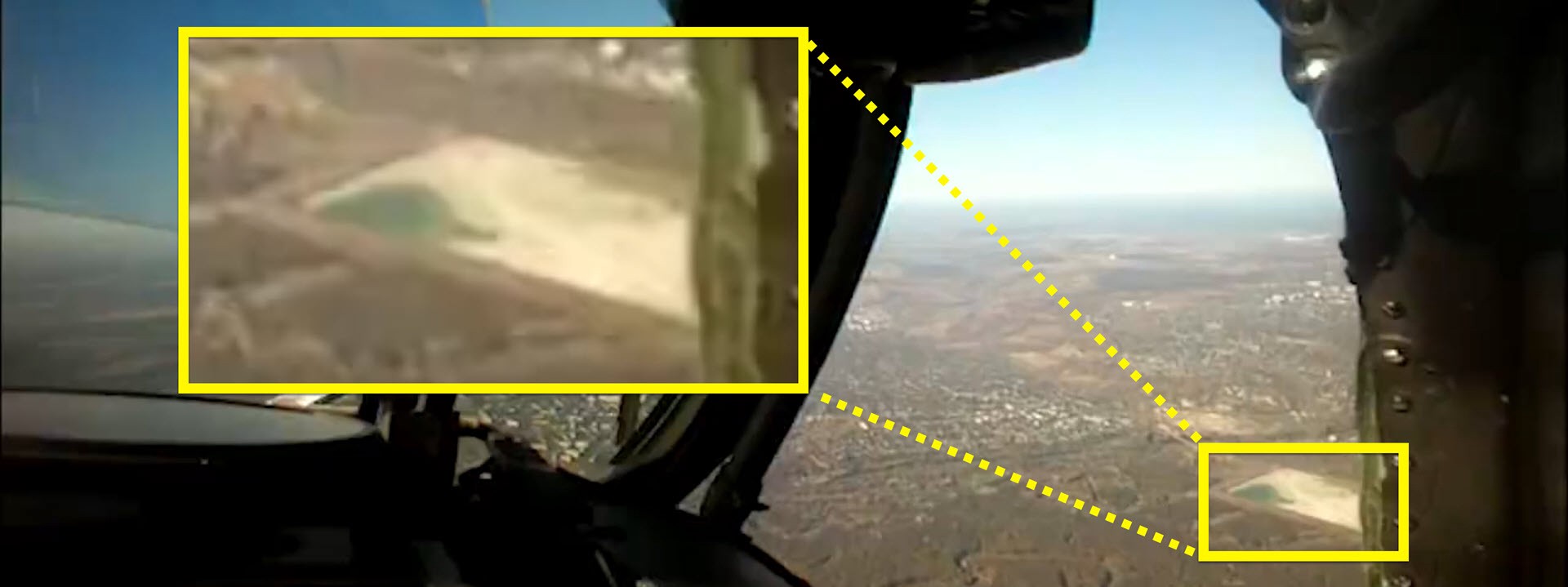#MinskMonitor: Ukrainian Helicopter Downs Russian Drone
Fourth Orlan-10 drone in 2018 downed in Ukraine
#MinskMonitor: Ukrainian Helicopter Downs Russian Drone

Fourth Orlan-10 drone in 2018 downed in Ukraine

On October 13, the Ukrainian Joint Forces Operation (JFO, formerly known as the “Anti-Terrorist Operation,” or ATO) published a report with accompanying photographs that a Russian Orlan-10 drone was downed near the town of Lysychansk in the Luhansk oblast. The Facebook post with these images claimed that the drone was downed by a Ukrainian Mi-24 helicopter crew.


A few days later, the Ukrainian Joint Forces Operation published a video from the helicopter that downed the Orlan-10 drone, showing the event take place.
[facebook url=”https://www.facebook.com/pressjfo.news/videos/358200441418458/” /]
Ukrainian forces have downed and/or recovered almost a dozen Russian Orlan-10 drones since 2014, with last week’s incident being the most recent.
Geolocation of footage
Thanks to frequent shots of the landscape below, geolocating the helicopter footage is fairly straightforward. One of the most striking details in the aerial footage is of the waste water of the Alkali Works water treatment plant, briefly visible from the helicopter’s view.

By matching this location to Google Earth, we can roughly recreate the helicopter footage, showing that the camera was facing the west and that the helicopter was somewhere over Borivs’ke for the shot. Along with the waste water facility, cleared sections of the forested area, as visible on satellite imagery, are a clear match to the aerial footage.

Frequent flyer
This is far from the first Orlan-10 drone downed by the Ukrainian military within Ukraine, with almost a dozen previous downings and additional sightings of the unmanned aerial vehicle since 2014. It is important to note that the Orlan-10 is developed within Russia at a Saint Petersburg-based firm and used exclusively by the Russian Armed Forces —despite plans to export it to foreign forces, there are no known sales of this drone to other countries and it has not been made available for commercial sale. A recent feature from Russian Ministry of Defense television channel Zvezda highlights the continued development and manufacture of Orlan drones.
https://www.youtube.com/watch?v=K2fmL167PA8
As the @DFRLab has detailed, the first Orlan-10 downing in Ukraine took place at the beginning of the ongoing war, in May 2014, followed by another downing in July 2014 near Zelenopilya.

While the recently-downed drone is essentially the same as it was in 2014, there are some small design changes. One of these changes was the removal of a serial number (seen within a black circle on the right side of the drone, just above a fan) on the aircraft, which was placed on the drone by the Russian manufacturer.

Orlan-10 drones are not just used for aerial reconnaissance — they are one of the most integral elements of Russia’s ongoing use of electronic warfare against Ukrainian forces in the Donbas. The Orlan-10 is used in conjunction with the “Leer-3” Russian electronic warfare system, which has been documented in Ukraine multiple times over the past four years.

When used with this Leer-3 system, the Orlan-10 drone is able to jam cellular communications and even hijack cellular transmissions and send SMS messages to nearby phones. Ukrainian authorities suspect that an Orlan-10 drone played a role in threatening SMS messages being sent to Ukrainian forces on the front lines.
This is the kind of thing that pops up on Ukrainian soldiers' smartphones when they're at the front. I've documented 40+ such SMS messages. pic.twitter.com/zUv7PkonKW
— Raphael Satter (@razhael) May 11, 2017
Conclusion
The continued use of Orlan-10 drones — which were developed by a Russian firm exclusively for the Russian Armed Forces — in the Ukrainian conflict is another indicator of Russia’s current involvement with the war. While Russia has significantly decreased the number of active servicemen dispatched to fight in the Donbas, it has increased its high-level technical and logistical support to the Russian-led separatists forces in the Donetsk and Luhansk oblasts. Most of the actual “separatist” fighters on the ground in eastern Ukraine are either locals, mercenaries, or foreign volunteers (most notably from Russia), but Russia is still just as much of a direct participant in the war as ever with their ongoing guidance, technical and logistical support, and financial assistance to the puppet “republics” of eastern Ukraine.
Although Russia still has not officially acknowledged their involvement in the war, the fact that they continue to deploy and utilize their own equipment, developed by and for the Russian military, shows that they have little regard for the successful implementation of the Minsk accords. This notion is especially evident when considering Russia’s continued use of the Orlan-10 system despite the fact that the OSCE Special Monitoring Mission (SMM) to Ukraine has repeatedly highlighted and released photographic evidence of Russian electronic warfare systems in the Donbas in the past year.
Follow the latest Minsk II Violations via the @DFRLab’s #MinskMonitor.
Follow along for more in-depth analysis from our #DigitalSherlocks.

